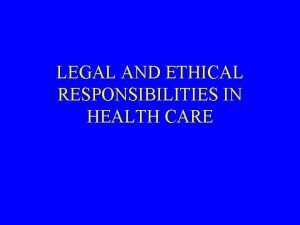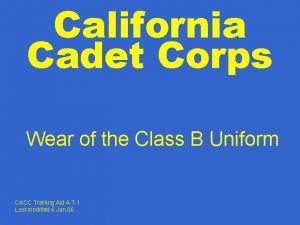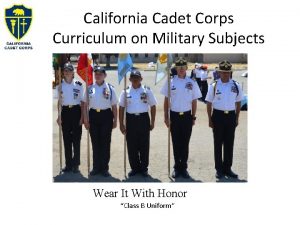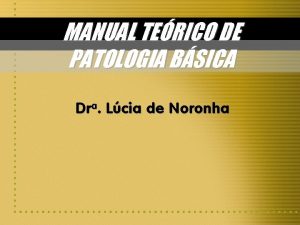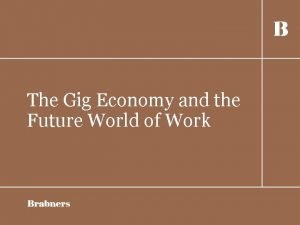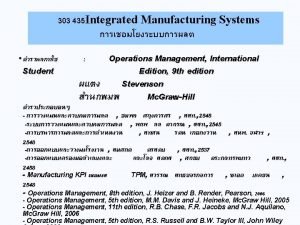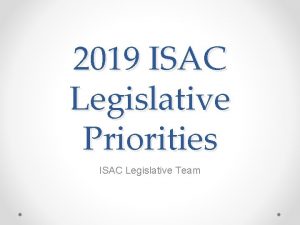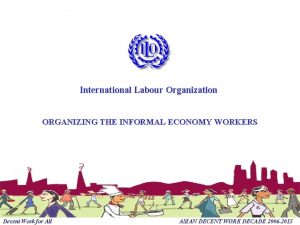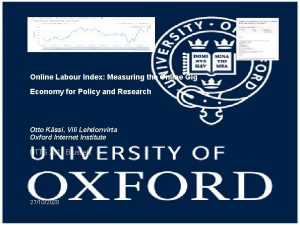ORGANIZING WORKERS IN THE GIG ECONOMY LEGAL LEGISLATIVE












- Slides: 12

ORGANIZING WORKERS IN THE GIG ECONOMY: LEGAL, LEGISLATIVE, AND REPRESENTATIONAL ISSUES (INCLUDING ANTITRUST CONCERNS) Mark Schneider May 1, 2017 9: 30 am-11: 15 am 2017 AFL-CIO LCC Union Lawyers Conference Denver, Colorado 1

ANTITRUST, WITHOUT TEARS ■ The Basics – Section 1 of Sherman Act makes it unlawful to enter into a “contract, combination or conspiracy” to unreasonably restrain competition. – Two entities who compete in the same or related markets who take action to fix the price at which they will sell their goods or services generally speaking are “price fixing”, a violation of the Sherman Act. – Using antitrust words, a horizontal agreement among competitors concerning price or output is called a “naked restraint” on trade 2

LABOR UNIONS AS CARTELS ■ A cartel is a group that gets together to regulate price or restrict competition. It is an illegal group ■ To labor’s enemies, unions are nothing more than cartels – they exist to impede competition in the labor market ■ Generally held view is that but for the fact that labor union activity is explicitly protected by an exemption to the antitrust laws, it would all be unlawful 3

THE INDEPENDENT CONTRACTOR ANTITRUST PROBLEM ■ The antitrust “labor exemption” covers unions representing “employees” as that term is defined under the NLRA and RLA. ■ It, generally, does not cover independent contractors or their unions, since independent contractors are viewed as independent business entities ■ Workers characterized (or mischaracterized) as independent contractors, and unions that attempt to organize those workers, need to address antitrust concerns. 4

“PER SE, ” AND “RULE OF REASON” ANTITRUST ANALYSIS ■ Naked restraints of trade are treated as “per se” violations of the Sherman Act – No ability to look into whether the combination advanced some social policy purpose that would override the harm caused to competition ■ When competitors join together to form an entity that provides a business benefit that could not be achieved without the combination, the combination is subject to “rule of reason” analysis. – For example, the NFL, or ASCAP – Rule of Reason analysis allows court to weigh benefit of combination against harm to competition. – The restraint must be “ancillary” to the integration. Claims that there are benefits that flow directly from reducing competition are not valid antitrust defenses 5

THE “SUPERIOR TRIAL LAWYERS” CASE ■ Private lawyers who accepted appointments to represent indigent defendants in D. C. were woefully underpaid, threatening the system ■ They engaged in a boycott to draw attention to the problem ■ The boycott was successful, rates were raised, and indigents were able to continue to be represented ■ All of the stake-holders were happy, except the Federal Trade Commission sued the lawyers claiming that they were engaged in a naked restraint of trade, and it should be subject to “per se” analysis, so that the benefits of the lawyers’ actions could not be considered. ■ The Supreme Court agreed, and ruled against the Trial Lawyers 6

Organizing Independent Contractors after the “Superior Court Trial Lawyers” Decision ■ If gig workers are treated as independent contractors, and ■ If efforts to organize those workers are subject to per se analysis by the courts, ■ Then, there needs to be a successful legal theory that excepts these efforts from normal antitrust principles. ■ Three such theories: – Parker state action immunity; – The labor exemption; – Other odd-ball exemptions 7

THE LABOR EXEMPTION ■ In Danbury Hatters case, in 1908, Supreme Court held that organized labor is an illegal cartel whose activities violate the Sherman Act. ■ Congress responded in the 1914 Clayton Act, and the 1932 Norris-La. Guardia Act, by establishing that though labor is an input to almost every good or service in the economy, that input should not be subject to antitrust concerns. ■ The labor exemption: “labor is not a commodity. ” 8

THE LABOR EXEMPTION AND INDEPENDENT CONTRACTORS ■ Businesses cannot protect their unlawful behavior by joining a union, or having all of their employees join a union, and then claim protection of the labor exemption. – Jacksonville Terminals: “antitrust jurisdiction cannot be declined simply because independent contractors masquerade as a union. ” ■ Unions lose protection when they engage with ‘non-labor’ groups – Allen Bradley ■ When is an independent contractor a business that should be subject to antitrust scrutiny, and when is it a worker whose labor should not be treated as a “commodity”? 9

THE LABOR EXEMPTION AND INDEPENDENT CONTRACTORS ■ Clear protection for union efforts to organize independent contractors who are competing with unionized workers ■ Some protection for independent contractors who provide services often provided by “employees” ■ Some protection when the independent contractor is providing a service – Cases which involve withholding a product, or raising the price of a product, as opposed to a service, find an antitrust violation ■ Some protection for workers who may meet NLRA definition of “independent contractor, ” but who are treated as “employees” for purposes of the antitrust exemption. – Absence of market power – Why should the common law of agency test of independent contractor apply? ■ A way to narrow the holding of Superior Court Trial Lawyers ■ Or, is the problem instead simply that Uber drivers are being misclassified? 10

Union-Like Services ■ Operate a union that does not engage in cartel-like behavior ■ Working with Uber, and not apart from it – Section 302 concerns ■ Lobbying for laws that advantage workers – Tip option for NY Uber drivers ■ Provide services to workers for a fee – Immigration help, insurance, legal services 11

Organizing in Areas Protected from Antitrust ■ Agricultural Coops – Maine lobstermen 12

